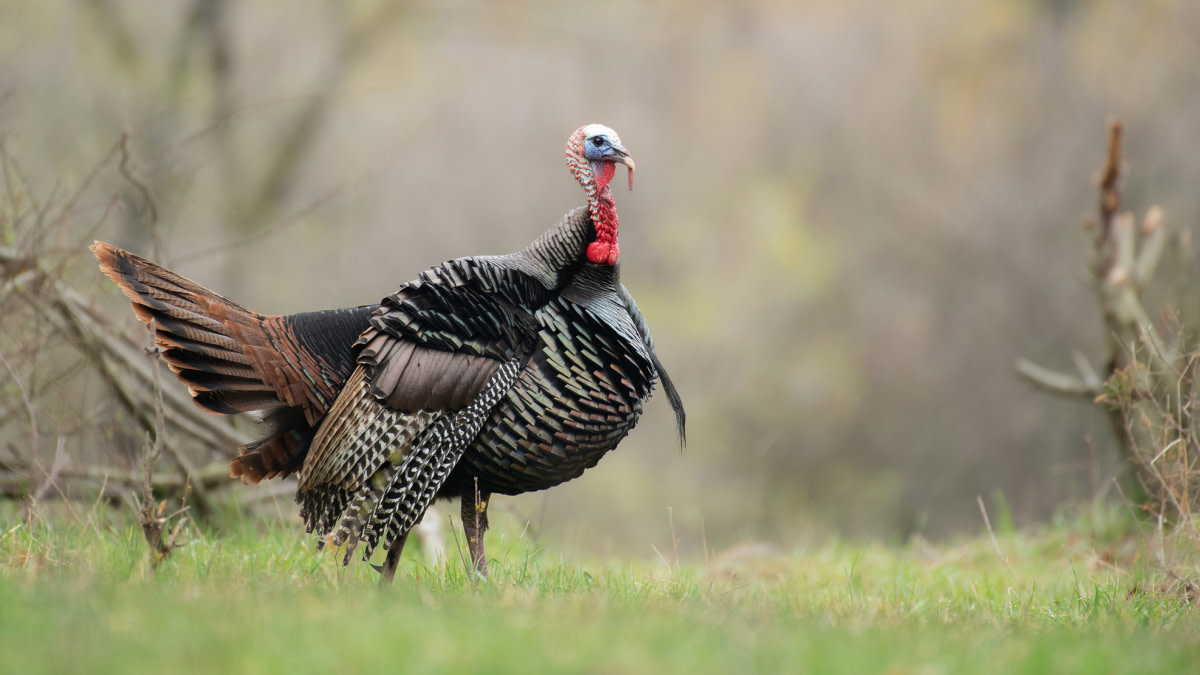
One of the most frustrating parts of chasing longbeards is having them go silent. We've all been there—and we've all failed to kill these birds. When this happens, start by asking yourself "why?"
What part of the breeding cycle is it? If it’s late season, toms are likely cruising the landscape looking for a lone hen to breed. Maybe you're hunting highly pressured birds on public land? That's a common reason toms go queit. Theorizing what caused the birds to go silent should dictate what tactics you deploy.
The Science of Silent Toms Mike Chamberlain, also known as @wildturkeydoc on Instagram and Steve's favorite follow, is a professor of wildlife ecology and management at the University of Georgia. For those interested in talking turkey, Mike has also been a featured guest on the MeatEater Podcast. His years of studying wild turkey behavior can teach us a thing or two about hunting silent toms.
“Research shows patience and willingness to sit still kills toms,” Chamberlain said. Time and time again, he has conducted surveys where GPS tracking data consistently shows turkeys coming to the exact location that a hunter previously called from, in many instances three or more hours after the hunter left the area. In many cases, hunters were within 60 yards of a silent tom and didn’t know it.
“If you think a gobbler heard you, he did,” Chamberlain said. “Sit tight and wait for his appearance. He had a different agenda that didn’t include you. Two hours from now, his agenda may include you.”
One of Chamberlain’s surveys rigs up hunters with a GPS tracker that pings their location every minute. One of the questions these hunters are asked is how long they committed to a specific setup. Data has shown that hunters continually overestimate how long they commit to any one setup.
“Set a goal and sit tight,” Chamberlain suggested. “If you want to commit to an area until 9:00 a.m., sit until 9:30 a.m.”
Hunting Tactics for Silent Toms For additional insight on coping with silent birds, I asked Michael Hunsucker of Heartland Bowhunter for his advice. It's no coincidence that Hunsucker’s ancedotal evidence falls right in line with Chamberlain’s science-based intelligence.
“Patience, though difficult, is everything when it comes to being successful on hard to kill gobblers,” Hunsucker explained. “When a tom is silent, it’s so hard to not only know where he is, but also to judge his mood and behavior. Getting in tight, within his comfort zone, may be just what you need to do to get him killed.”
This is where prior scouting comes into play. If you have general knowledge on the flock’s core area, they likely aren’t far off. Just because they’re silent doesn’t necessarily mean that they aren’t there.
However, if you're starting from scratch, there are other strategies to locating these silent gobblers. “Glassing and roosting them is key,” Hunsucker said. “Lots of times, even if they don’t gobble on the ground much, they will gobble on the roost.”
If things get Western, glassing, spot and stalk hunting, and still-hunting can also come into play. If your terrain is conducive to doing so, glassing up a lone gobbler in open country and closing the distance can be the answer. Breeching his comfort zone before calling can be just enough to trigger an aggressive response.
In terms of calling strategy, Hunsucker likes to deviate from the normal series of yelps and utilizes more subtle calling techniques, such as soft purrs. He'll also add some realism with scratching and foraging sounds. Hunsucker has found that imitating a hen aggressively feeding by scratching at the leaves with your hand is a tried-and-true tactic.
Late in the season, or when dealing with a known subordinate gobbler, Hunsucker adapts his decoy spread accordingly. While his early season strategy often involves a tom or jake decoy, these silent toms often call for a single or double hen setup.
Don’t let a silent morning deter you from enjoying a quality hunt. Have confidence and patience knowing that your longbeard might show up unannounced. When in doubt, sit still and plan on eventually breaking that silence with a shotgun blast.
Feature image via Matt Hansen.






